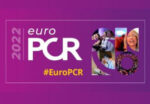Though the different percutaneous valves have been designed and authorized for aortic stenosis with tricuspid valve, they have often been used to treat aortic regurgitation as an off-label indication. The Jenavalve Trilogy valve has recently received the CE Mark for aortic regurgitation and aortic stenosis. This study included 45 patients with severe AR. Primary end...
Infective Endocarditis in TAVR: What’s the Best Treatment?
Infective Endocarditis (IE) rate after TAVR ranges from 0.7% to 3.4%, depending on the different analyses, and is comparable to that after SAVR. Close to 50% of patients treated with surgery received a prosthetic valve; in TAVR, the figure is lower, possibly due to the characteristics of patients (even though it remains unclear). Researchers looked...
The Most Relevant Articles of 2021 in Pharmacology
This last year, new data in pharmacology gave way to changes in practices and new hypotheses, when not simply further justified the already existing evidence. In this new editorial section, we share the most relevant of last year’s works to keep you up to speed on the main topics in the field. The Most Relevant...
AHA 2021 | PALACS: Posterior Left Pericardiotomy Improves Post-Procedural AF
Posterior left pericardiotomy for the prevention of atrial fibrillation during cardiac surgery seems to significantly reduce atrial fibrillation risk (AF) after procedure. The procedure consists of a 4-5 cm incision in the posterior pericardium to allow drainage of fluids and thrombi from the pericardium to the pleural cavity during postoperative period. Patients receiving the incision during surgery...
The Most Read Articles in Interventional Cardiology in October
01- ISCHEMIA: Prognosis is Determined by Anatomy, not Functionality The ISCHEMIA study keeps providing scientific news. This work in patients with stable coronary artery disease had already shown (to our surprise) that ischemic burden does not predict 4-year mortality. Read also HERE 02- Chile Sessions 2021 | Clinical Case Contest for Young Interventionists It is with great...
37th Annual Meeting of the Uruguayan Society of Cardiology: Registration Waiver for SOLACI Members!
The 37° Annual Meeting of the Uruguayan Society of Cardiology, to be held virtually from May 26 thru 28 by the Uruguayan Society of Cardiology (SUC), is of the highest academic and scientific value. The event will have relevant international guests and will run through different topics, such as atrial fibrillation, chronic coronary syndromes, type...
Should Total Occlusion Influence on Revascularization Strategy?
Success or failure of total occlusion (TO) revascularization does not affect mortality at 10 years, and this does not depend on revascularization strategy (PCI vs surgery) or location. The long-term clinical benefit of recanalization and PCI or TO artery bypass graft remains nuclear. This is a sub-study of the SYNTAXES (Synergy Between PCI With Taxus...
The Fellow’s Corner | 2nd Clinical Case: An Explosive Mission
Read the case presentation and join the conversation through the comments in this post! Case Introduction: An Explosive Mission! 56-year-old male patient Severe smoker Hypertension Dyslipidemia Sedentary lifestyle and stress A sibling suffered from an acute myocardial infraction Cardiac markers: Standard angina, intensity of 8-9/10, 3-to-4-h long, and dyspnea (on and off for the past...
Clinical Improvement Without Ventricular Function Improvement After CTO
The benefits offered to patients by attempting the rechanneling of a chronic total occlusion are still unclear. Additionally, sometimes the procedural risks are somewhat undetermined. Taking into account these controversies, this work sought to prove whether successful rechanneling of a chronic total occlusion improves ventricular function. This is not a soft endpoint; it has been...
Practical Management of Coronary Perforations
Coronary perforation has an incidence of 0.5% and it is associated with a 13-fold increase in in-hospital events and a 5-fold increase in 30-day mortality. This event is so catastrophic that its management has become indispensable knowledge to all interventional cardiologists. This accident is most frequently provoked by artery over-dilation caused by a balloon or...









